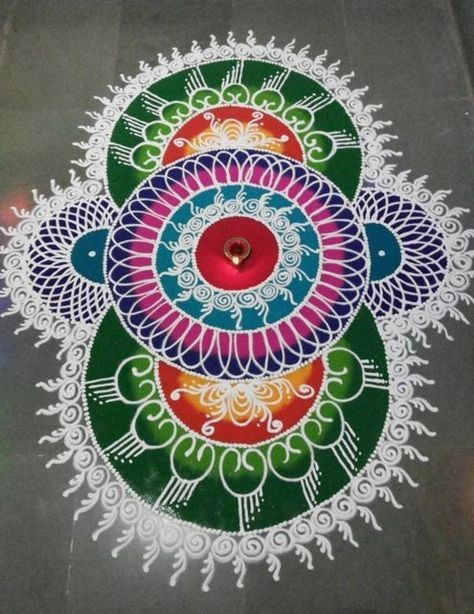Hey Guys, Welcome back to my blog page. I hope u all are staying safe and happy. So guys i am starting a new topic which is Indian culture. Today I am going to talk about Rangoli.
Rangoli is a art form originated in India. It is a traditional form of art of India originated before Hindu epics .Rangoli is a spiritually art form for Indians. Elaborate designs in vibrant colours are created at the entrance of homes to welcome good spirits and appease visitors . The fragility of the design and materials used sand or powder.
Rangoli is made by limestone powder, dry flour powder and many more things.
Rangoli is know by many names across the country . It is muggu in Andhra Pradesh, chowkpurana in Chattisgarh and alpana in West Bengal . Pookalam or flower rangoli is ubiquitous in Kerala, Karnataka and Tamil Nadu, espically during harvest festivals of pongal and onam .
In India , Rangoli is made on festivals like Diwali, Sankranthi and other Hindu festivals
1.CHOWKPURANA:
chowkpurana is the oldest form of rangoli in India. which is still made by elderly womens to welcome guests and on auspicious days. It is usually made with wheat flour and natural colours.
2. DOTTED RANGOLI:
Dotted rangoli is common in Maharashtra and Tamil Nadu. Different shapes are created by joining dots in equal lines and numbers . Drawn with rice flour or chalk powder.
3. FREE HAND RANGOLI:
This is the most common rangoli and famous form fo rangoli . Made by using colour sands
4. FORAL RANGOLI:
Foral rangoli is made by using beautiful and colourful petals and leaves. It is one of the attractive rangolis. Known as pookalam , they are the major attraction duing festival of onam in Tamil Nadu.
5. SANSKAR BHARATI RANGOLI:
Sanskar bharati rangoli gets by the name of the design which mainly contains circles, each representing a different sanskar in our life. There are about six patterns in the SANSKAR BHARATI RANGOLI with the help of which large rangolis are drawn on the floor.
6. PORTRAIT RANGOLI :
This is made by drawing a portrait on a paper then pasting it on the floor. It is followed by making multiple hues of primary and secondary colours by adding white rangoli powder as it base.
So Guys this much for today's blog i hope u liked and and if u liked it tell me in the comments. let me know what u all want to read next and ya i will see u all in my next blog bye!!😊😊
Love u all💓💓💖






Enjoyed reading it,great work!
ReplyDeleteNice work riddhima
ReplyDelete👏👏
ReplyDeleteVery informative... keep it up
ReplyDeleteNice blog
ReplyDeleteGreat work!
ReplyDelete👍👍
ReplyDeleteAwesome, Riddhima! Despite having lived in India all my life, I never knew there were so many types of Rangolis. Your blog was really informative. Looking forward to reading more soon. Well, I would like to read a blog on travel next, I'd enjoy that.
ReplyDeleteInformative blog
ReplyDelete